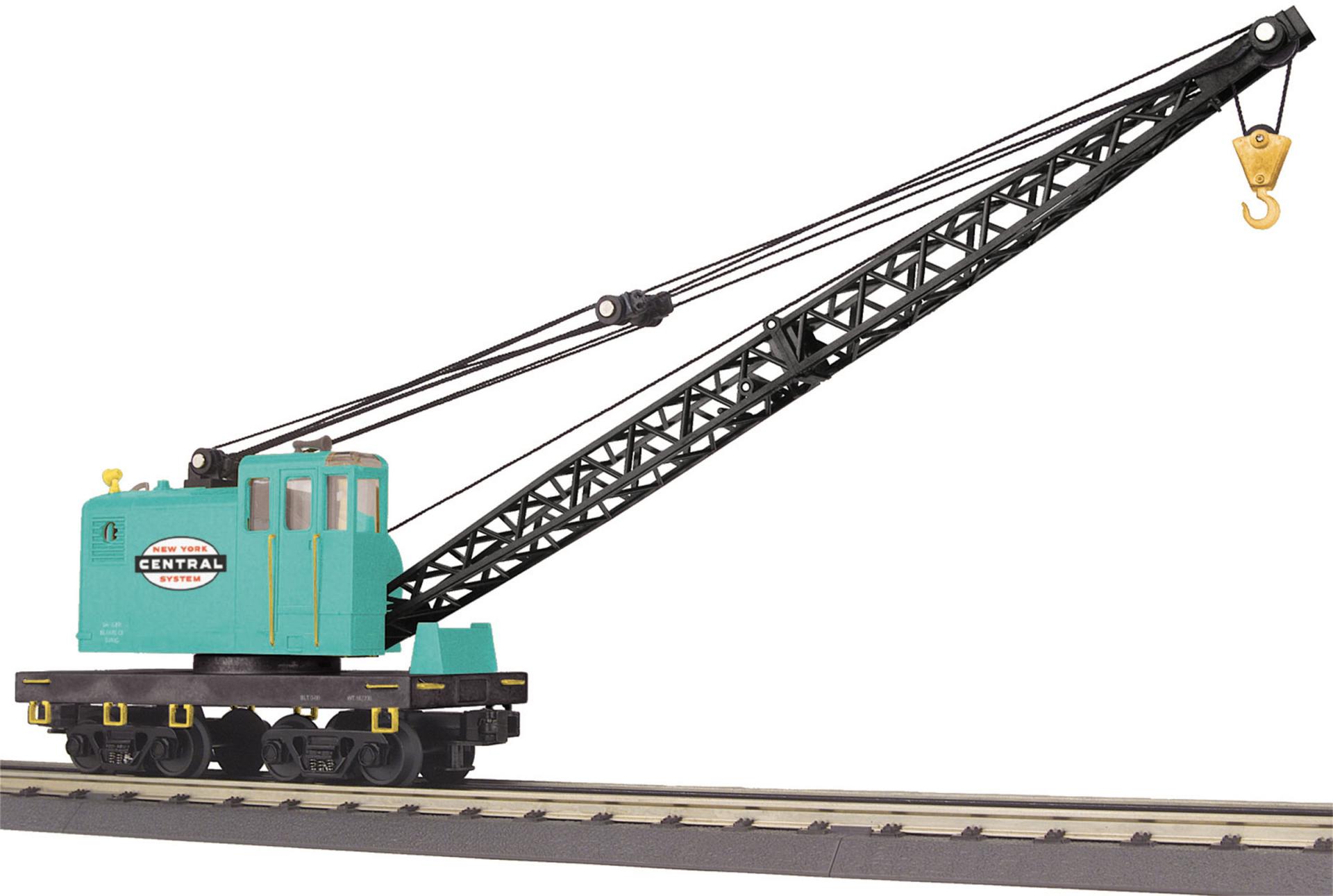
New York Central O Gauge RailKing American Crane Car
Overview
In the early days of railroading, the job of cleaning up a wreck was usually done by men and horses. The first steam wrecking crane, a relatively small affair with a 20-ton lifting capacity, appeared in 1883. Its maker, Industrial Works of Bay City Michigan, introduced a fully revolving model a decade later. As the product became popular, Industrial Works, now renamed Industrial Brownhoist, and its chief competitor, Bucyrus-Erie of South Milwaukee, introduced larger and larger models to cope with increasing locomotive and car weights. By the World War I era, steam-powered cranes of 120-ton capacity, like our RailKing model, were a common size.
While a wreck train on the way to a wreck had priority over other traffic, cranes were subject to rather low speed restrictions, typically around 35 mph with the boom trailing and 25 mph if the boom was facing forward. The larger hook closer to the cab was actually the main lifting hook, used for locomotives. The hook at the end of the boom was a lower-capacity auxiliary hook, used when more reach was needed. Slings, chains, and spreader bars were used to attach the hook to the car or locomotive being lifted; the hooks were never attached directly. While some cranes were capable of limited self-propulsion, that was only for positioning at a site, not for travel to and from wrecks or jobs.
High quality, traditionally sized RailKing Freight Cars provide detailed bodies and colorful paint schemes for the O Gauge railroader. MTH makes an enormous variety of RailKing Freight Cars, including many different car types and roadnames. No matter what era or part of the country you are modeling, RailKing is sure to have something for you.
Features
- Intricately Detailed Durable ABS Body
- Metal Wheels and Axles
- Die-Cast 4-Wheel Trucks
- Operating Die-Cast Metal Couplers
- Colorful, Attractive Paint Schemes
- Decorative Brake Wheels
- Fast-Angle Wheel Sets
- Needle-Point Axles
- Unit Measures:12 1/4 x 2 1/2 x 4 1/2
- Operates On O-27 Curves
